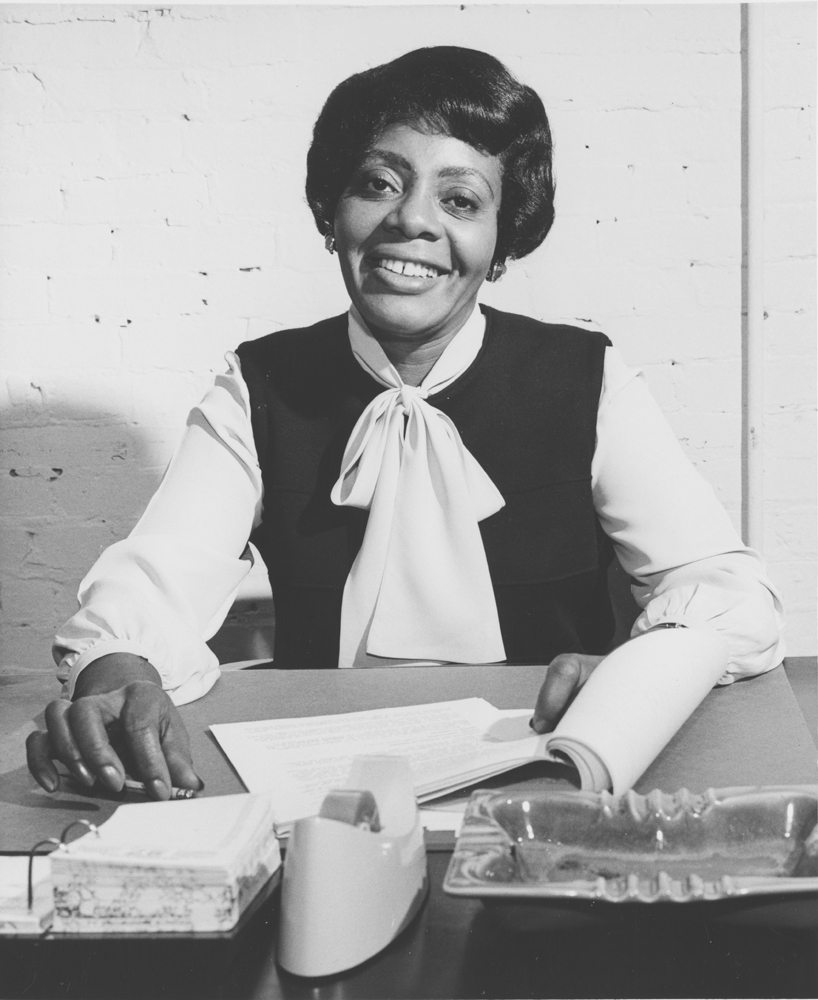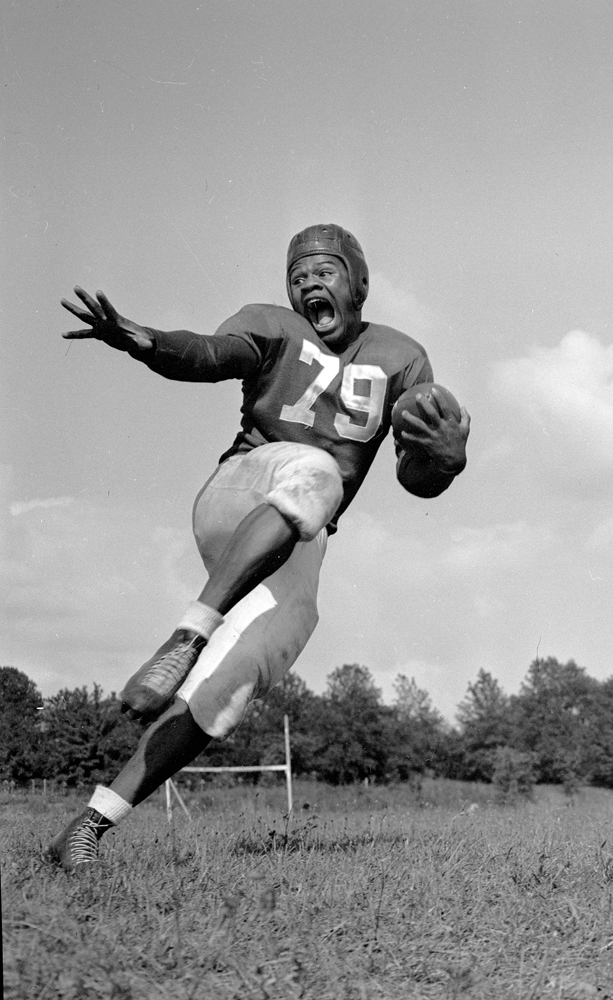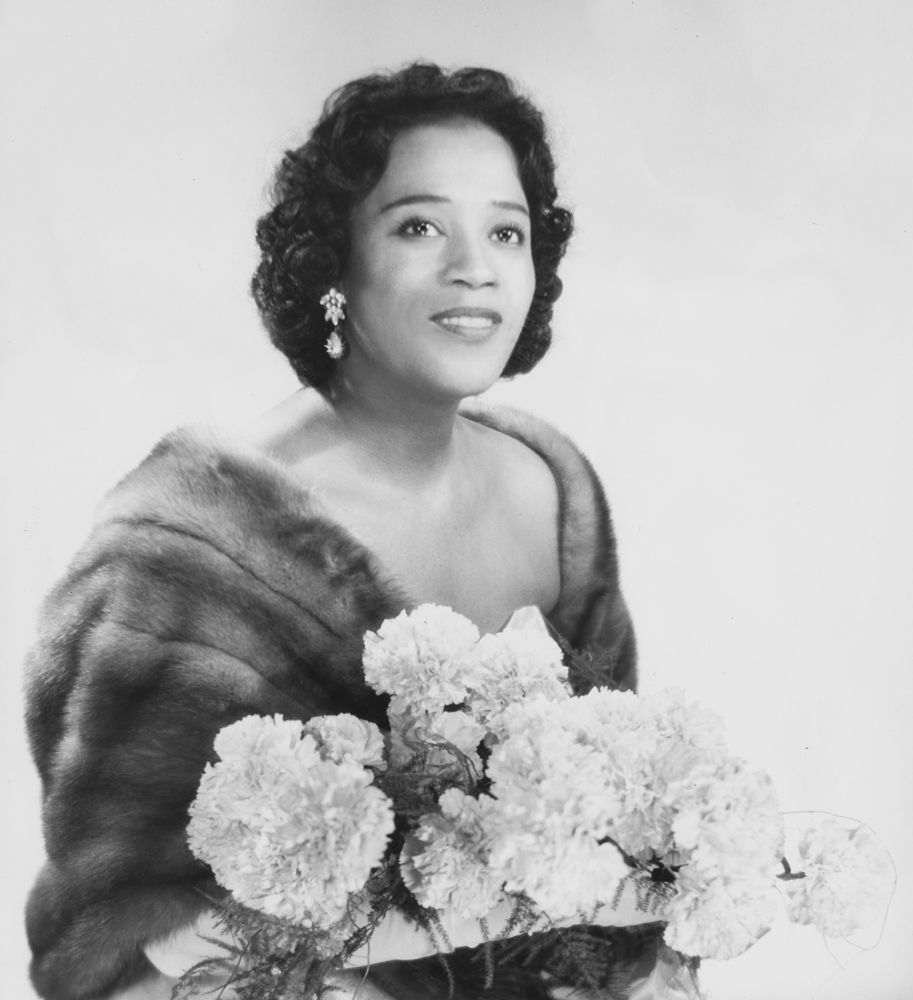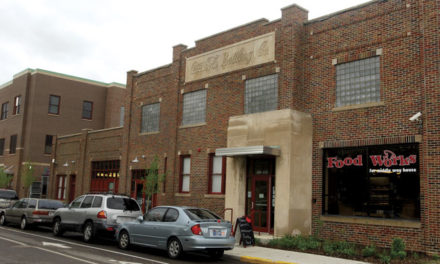
LaVerta Terry. Photos courtesy of Indiana University Archives
BY LEE ANN SANDWEISS
In 1947, the Brooklyn Dodgers’ Jackie Robinson smashed baseball’s color barrier when he became the first African American to play in the major leagues. Since then, many other African Americans have made history by surmounting racial prejudice in a wide range of fields, including medicine, law, education, public service, and sports.
The Monroe County History Center, 202 E. 6th St., is celebrating 29 local legends in the exhibit “Breaking the Color Barrier: Bloomington’s Firsts,” on display now through October 12.

George Taliaferro. Photos courtesy of Indiana University Archives
Among those recognized:
• Opera singer Camilla Williams, who, in 1946, became the first African American to sign a contract with a major American opera company—a year before Robinson broke the color barrier in baseball. In 1977, she became the first African American appointed professor of voice at the IU School of Music.
• LaVerta Terry, who, in 1963, was the first African American teacher signed to a long-term contract with the Monroe County Community School Corporation, a position for which she had waited 14 years.
• George Taliaferro, an IU football star who led the team to its only undefeated Big Ten Conference championship. In 1949, Taliaferro was the first African American drafted by a National Football League team.
Monroe County History Center Exhibits Manager A. J. Gianopoulos says the history center itself is part of Bloomington’s segregated past. “This building, formerly a Carnegie Library, was built on the site of the Colored School,” he notes.
Gianopoulos says the artifacts in the exhibit share an important part of the community’s collective history. “In 1948, George Taliaferro was at Bloomington’s Princess Theatre with a date, and they were in the balcony, which was designated for colored persons,” Gianopoulos says. “He unscrewed and removed the ‘Colored’ sign, and he and his date sat where they wanted. I consider this a defining moment in the history of Bloomington’s desegregation.” The Princess Theatre “Colored” sign, which Taliaferro has kept all these years, is part of the exhibit display.
“Until now, the stories of the African American community were largely absent from those told here,” Gianopoulos says. “I think this exhibition is a great way to start changing that.”
The history center is open Tuesday–Saturday, 10 a.m.–4 p.m. Admission to the exhibit is $2 for adults, $1 for children 6–17, and free for children ages 5 and under.
For more information, visit monroehistory.org.
EVENTS
• October 6—Bicentennial on the B-Line: A walk through the past and into the future.
• October 11–14—The Stories of Monroe, an original play, at the Unitarian Universalist Church of Bloomington, 2120 N. Fee Lane,
7 to 9 p.m.
• November 11—Bicentennial 5K
at City Hall.
Keep up with the City’s bicentennial activities at bloomington.in.gov/bicentennial.

Camilla Williams. Photos courtesy of Indiana University Archives







